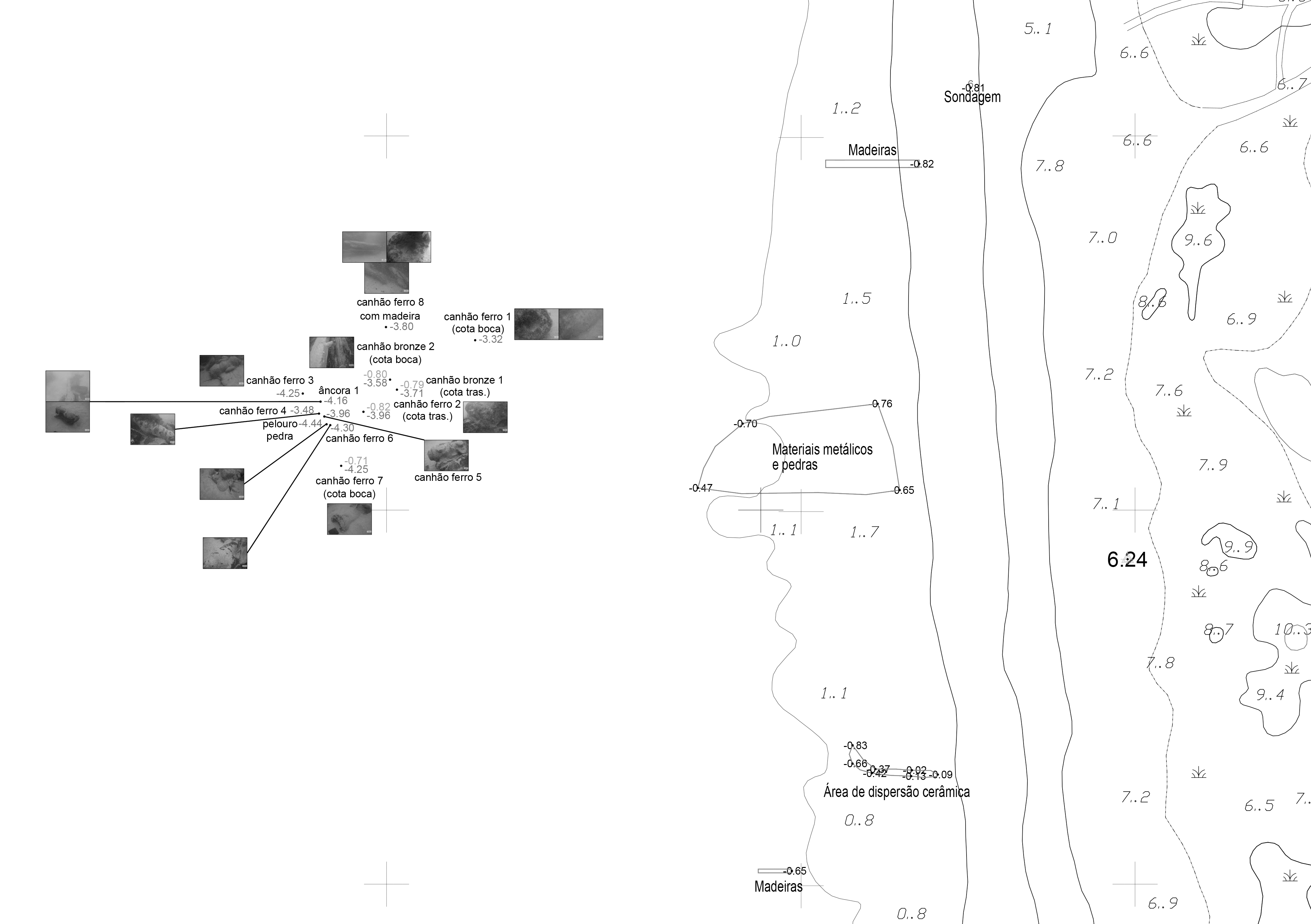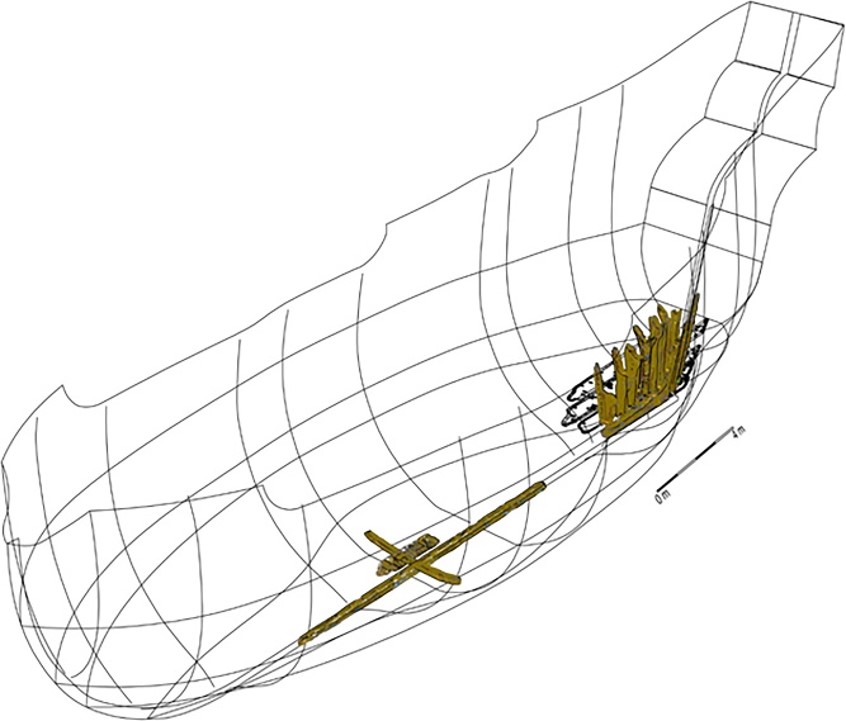The Belinho 1 Shipwreck
Ana AlmeidA, João Sá, Alexandre Sá, Ivone Magalhães, Alexandre Monteiro, Adolfo martins, Tânia casimiro, and Filipe Castro
Country: Portugal
Place: Belinho, Esposende
Coordinates (approximate): Lat. ; Long.
Type: Unknown
Identified: No
Dated: 1525-1550
Introduction
In the winter of 2014 a storm exposed the remains of a shipwreck. Pewter plates, ship timbers and iron concretions were thrown on the eroded beach at Praia do Belinho, Esposende, Portugal.

A second possible shipwreck site – suggested by a large number of amphorae shards – appeared nearby and the two probable shipwreck sites were designated as Belinho 1 and Belinho 2.
The finders, João and Alexandre Sá, were involved in the project from the beginning and are in charge of the site recording.
The recording of the hull remains was a teamwork of a large crew, sponsored by ForSEAdiscovery and the Municipality of Esposende, and supervised by expert shipwright António José Samuel, from Vila do Conde.
The study of this shipwreck was started by a team from the Centro de História de Além-mar at Universidade Nova de Lisboa, under the direction of José Bettencourt, contracted by the municipality of Esposende to record the most diagnostic timbers washed ashore in 2014.
In 2015 the project was passed to a team from Instituto de Arqueologia e Paleociências, also at Universidade Nova de Lisboa, and integrated in the scope of ForSEAdiscovery, a Marie Curie grant (agreement no.: 607545) directed by Ana Crespo Solana and Nigel Nayling. All timbers were recorded and published online (Castro et al. 2015), and the site was surveyed by a team of divers.
In 2017 the site was surveyed again, this time by a team from the University of Porto under the direction of João Tasso de Souza.
Team
Ana Almeida and Ivove Magalhães, Câmara Municipal de Esposende.
João Sá and Alexandre Sá, Finders.
Ana Crespo Solana, Nigel Nayling, Jemma Bezant, António Carmo (Samuel), Isis Farias, Isabel Gonçalves, Peter Groenendijk, Adolfo Martins, António Santos, Koldo Trapaga, ForSEAdiscovery.
Mário and Rosa Varela Gomes, Alexandre Monteiro, Tânia Casimiro, Joana Golçalves, Flávio Biscaia, Instituto de Arqueologia e Paleociências.
Filipe Castro, Chris Dostal, Texas A&M University.
Story of the Ship
Not much is known about the story of this ship. the cargo suggests that it was sailing south, from some north European harbor, and the artillery and cargo place its loss sometime in the second quarter of the 15th century.
Loss
We do not have information about the ship’s loss. its location suggests a common shipwreck model with the ship driven ashore during a storm.
Find
There was an information about the existence of an anchor and two bronze guns in this the area on the archives of Esposende municipality, and it is possible that part of this site may have been periodically exposed, mostly during the winter, when the sediments tend to disappear, but the first artifacts were reported by sculptor João Sá in the winter of 2014, .
Site Formation Process
The sandy beach of Belinho is probably geologically recent, and the deposition of sediment may have covered this site during centuries until a pronounced erosive process started thinning the sediment blade in the area, in the 1980s.
Tumulus
The site exposed consisted of scatter of artifacts and timbers concentrated in a 20 x 40 m area. The rocky bottom crevices are full of sediment in the summer but seem to clear substantially in the winter, exposing timbers, an anchor, several iron guns, two bronze guns, and an important number of artifacts.
Ballast
It is difficult to identify the ballast in this area, which is partially covered with pebbles. There are, however, stones present that clearly are not part of the geological make up of this region.
Ship Fittings
So far we have found a series of artifacts that were part of the ship fittings, and necessary to ensure its safe voyage.
Anchors
One large anchor was found on the site.
Guns
A number of guns have been located on this site, although there might be more.
Other
Hull Remains
Scantlings
Cargo
So far we have identified a large number of pewter plates, copper plates, and
Personal Items
A concretion containing a sward, another containing an ax, a small fragment of chain mail
Rigging
No rigging parts wer found so far.
Reconstruction

The timbers available for study are only the ones that washed ashore at Belinho beach over the years. A substantial part of the hull is still in situ, trapped between the rocks and partially covered by sediment during the summer months.
The location of this shipwreck makes it very difficult to study, partly due to the lack of visibility, and partly because of the constant waves that break over the site.
The timbers that were recovered and are kept in water tanks by the Municipality of Esposende were characteristic of the ship’s lower hull and allowed for a tentative reconstruction, based on the only measurement that could be obtained from the site: the flat of the floor timber near amidships.
Frame number …
Beam: Estimated 7 m.
Keel Length: Estimated 15 m.
Length Overall: Estimated 21 m.
Number of Masts: Unknown, possibly three plus bowsprit.
Deliverables
References
Almeida, A., Castro, F., Monteiro, A., and Magalhães, I., 2017. “O naufrágio quinhentista do Belinho, Esposende.” Almadan, 2.21: 80-95.
Barros, A., 2015. “Breve Relação do Naufrágio do Navio Nossa Senhora da Rosa, Perdido Através de Esposende em 1577. O navio do Belinho?”. In A Gestão dos Recursos Florestais Portugueses na Construção Naval da Idade Moderna: História e Arqueologia. Lisboa: IAP/FCSH-UNL, pp. 51-60.
Bettencourt, J., Fonseca, C.; Coelho, I.; Carvalho, P. e Silva, T., 2014. O Navio de
Belinho. Catálogo dos materiais inventariados pelo CHAM em Junho de 2014. Relatório.
Castro, F., Almeida, A., Bezant, J., Biscaia, F., Carmo, A., Crespo, A., Farias, I., Gonçalves, I., Groenendijk, P., Magalhães, I., Martins, A., Monteiro, A., Nayling, N., Santos, A., Trapaga, K., 2015. The Belinho 1 Timber Catalogue, Typed report on file in the Ship Reconstruction Laboratory (academia.edu), Texas A&M University.
